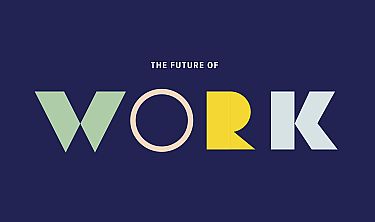How is our workplace changing? Are leaders really keeping up with what workers are looking for at work?
Gallup Minneapolis hosted a group of business leaders to talk through Gallup’s 2017 State of the American Workplace report. The message was loud and clear from their research: Employees want to do more at work than just show up and collect a check. They want purpose. And the big question for anyone who hires or manages employees or is trying to attract freelance talent is: Do people want what your workplace is selling? When employers compete for talent, freelancers and employees get to be choosy.
Gallup collected data from almost 200,000 U.S. employees. We dug into the report and pulled out the research that’s most interesting to freelancers and those who are starting to think about work differently. Here’s what Gallup found.
People Are More Important Than Ever
At a time when so much of the political discussion is about automation and people losing their place in companies, Gallup’s research shows that people are actually more important than ever.
"Regardless of all the changes in the workplace, people remain the core component in an organization's success or failure. Leaders have to think about their technology, policies, products and services — but only because these are factors that influence the engagement and success of their employees. The key to an organization's growth has been and always will be its workforce.”
We’ve found that to be incredibly true. Successful business models and freelancing relationships have to be based on connecting the right people with the right work, and connecting people to each other. People are especially important when organizations are making big technology purchases, integrating different technologies and doing change management work to get teams of people ready for big tech or cultural shifts. We often forget that people are a crucial component to making any technology investment successful.
We Want to Rally Around a Clear Vision
In 2017, workers are mobile, the unemployment rate is low, and more than half of employees (51 percent) say they’re watching out for a new job.
The report underlines the increasingly mobile nature of the workforce, and links it to a call to action for leaders:
“There is an urgency for leaders to define and convey their vision more clearly — and rally employees around it.”
That vision is so important partly because employees can’t clearly see their employer’s vision right now. According the the report,
- “22% of employees strongly agree the leadership of their organization has a clear direction for the organization.
- 15% of employees strongly agree the leadership of their organization makes them enthusiastic about the future.
- 13% of employees strongly agree the leadership of their organization communicates effectively with the rest of the organization.
- Only 33% of employees are engaged in their job.”
Those numbers are incredibly low, and they should be a warning sign for employers everywhere. If people don’t feel connected to the organization, they’ll look around for options — and in this economy and hiring market, chances are they’ll find them: “Currently, 63% [of employees] believe it is "very likely" or "somewhat likely" that they would find a job as good as the one they have, up from 42% who said the same in 2010. The current figure is similar to what Gallup measured in early 2007 before the recession.”
We Want to Do Work We Love
It seems obvious that employees are happiest at work when they can excel and shine. The research backs that up: People ranked “the ability to do what they do best” as the most important factor in any job. Both men and women, of every generation, ranked this factor equally.
And workers are happiest when they’re challenged by the work. The report also found that “when employees are a mismatch for their role and organization, they often struggle to succeed or become bored and restless. Their days — even their careers — can feel wasted, along with their sense of purpose. Workers want roles and employers that allow them to make the most of their strengths.” This may be contributing to the rise of the freelancer - people stepping out on their own to pursue challenge and “what they do best” instead of just filling a desk.
We Want Work That Fuels Our Personal Happiness
The second-most-important factor for employees is “work-life balance and better personal well-being.” Work-life balance was more important to female employees than to male employees, and more important to millennials and Generation Xers than to baby boomers, but it still came in at No. 2.
This finding seems to directly link to another study about how flexibility at work makes us even happier than we realize. While most people say they value work-life balance and flexibility to a certain point, we’re usually more likely to choose higher pay over higher flexibility, and research shows that might not actually be the best choice for our happiness.
Two professors wrote an analysis of the flextime studies in The Wall Street Journal. Their conclusion:
“We can converge on a world in which we all work 9 to 5 (and often longer), with little flexibility. Or we can find a way to build everyday routines that are more accommodating, more flexible and potentially a lot happier.”
This is the key for many employers who still offer employees a traditional work structure. We can all find ways to shift our working patterns and expectations to maximize productivity and employee satisfaction. The two factors aren’t mutually exclusive. As more and more companies learn to integrate with independents, and as more and more people are leaving behind traditional employee roles for a portfolio and freelance career, it seems inevitable that corporate culture will have to shift and accommodate.





